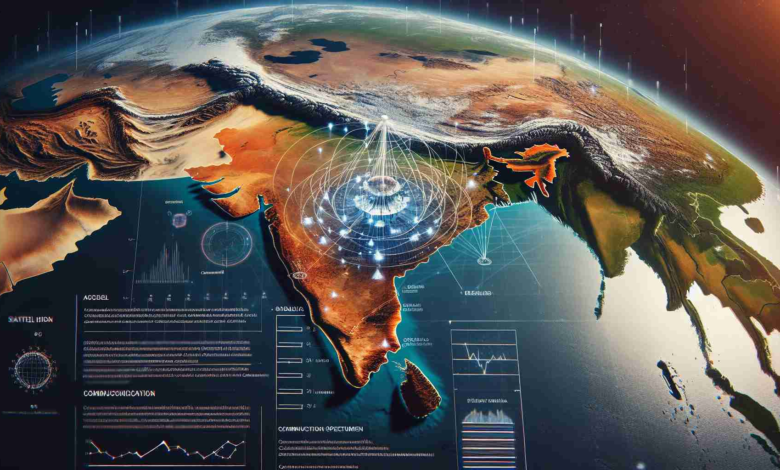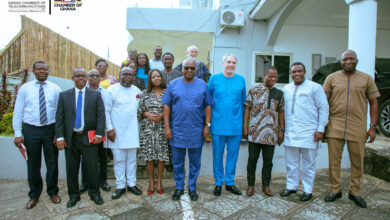Insights from DoT and TRAI Discourse

Summary: The Indian Department of Telecommunications (DoT) is set to consult the Telecom Regulatory Authority of India (TRAI) about the methodologies and pricing strategies for assigning spectrum for satellite communication services. This comes after the introduction of the new Telecommunication Act. Current licenses, particularly for VSAT services, may require adjustments to align with the new Act’s provisions. Satellite communication (satcom) technology is critical for connectivity in isolated regions, and market players like OneWeb, Jio Satcom, and Starlink are directly affected by regulatory changes.
In the pursuit of enhancing India’s satcom infrastructure, the DoT is poised to engage in discussions with TRAI to evaluate the most effective methods and pricing models for the allocation of spectrum used for satellite communications. While the TRAI previously opened a dialogue on this topic, the conversation has taken a new direction with the new Telecommunication Act coming into the picture.
The DoT will also consider the revision of existing licenses, particularly those related to VSAT (Very Small Aperture Terminal) services, to ensure transparency and compliance with the updated legislative framework under the Telecommunication Act of 2023. Key industry players like OneWeb and Reliance Group’s Jio Satcom, both of which possess GMPCS and VSAT licenses, are likely to be impacted by these regulatory refinements.
Notably, under the new legislation, satellite communication providers are afforded the privilege of obtaining spectrum without auctioning for direct point-to-point communication. However, the provision for VSAT operators to offer internet services to a wider pool of subscribers raises questions about alignment with the new Act.
The DoT’s deliberations with TRAI will be a determining factor in establishing the licensing approach for satcom service providers moving forward. This regulatory foresight and collaboration is essential for a well-integrated satellite-based connectivity ecosystem, particularly as the leading satellite enterprise, Starlink, spearheaded by Elon Musk, eyes expansion in the Indian market with its considerable fleet of low earth orbit satellites.
Industry Overview and Market Forecasts
The satellite communication (satcom) industry encompasses a variety of applications including broadcasting, internet connectivity, military communications, and disaster management. This industry plays a significant role in India, which, due to its large and geographically diverse nature, relies heavily on satellite technology to provide coverage in remote and rural areas where traditional terrestrial networks are not feasible.
In recent years, advancements in satellite technology such as high-throughput satellites (HTS) and the emergence of Low Earth Orbit (LEO) satellite constellations have driven substantial changes in the industry. Companies like OneWeb, Starlink, and Jio Satcom are competing to deploy these modern constellations that promise to deliver broadband Internet access with higher speeds and lower latency than ever before.
The market forecast for India’s satcom industry is optimistic. It is expected to grow significantly owing to the government’s push for digital connectivity and the increasing demand for bandwidth in the telecommunications sector. The introduction of favorable policies and the allocation of spectrum for satcom services will act as catalysts for growth.
Current Issues and Industry Challenges
One of the most pressing issues for the satcom industry is the complex regulatory environment. Licensing conditions, spectrum fees, and the method of spectrum allocation are topics of discussion and can create uncertainty for market players. In India, the adaptation of licenses and alignment with new regulations such as the Telecommunication Act of 2023 is crucial for legal and operational clarity.
Another challenge is how to balance the efficient and fair allocation of spectrum with the need to raise revenue for the government. The non-auction-based approach mentioned in the article may conflict with revenue generation objectives, creating a point of contention between industry players and policy-makers.
Interference management and coordination with global satellite operators also present significant issues. With the increasing number of satellites and constellations, the risk of signal interference and space debris becomes greater, necessitating international cooperation and regulatory frameworks to manage these risks effectively.
Moreover, as the Indian government works to enhance rural and remote connectivity, providers must also address the affordability of services and the need for adequate ground infrastructure. Energy consumption and the environment are further considerations in the deployment of widespread satcom technologies.
To explore more about the satcom industry and the latest policies affecting it globally, you can refer to the following organizations’ websites:
– World Satellite Business Week: World Satellite Business
– Satellite Industry Association: Satellite Industry Association
– International Telecommunication Union (ITU): International Telecommunication Union
For India-specific information and to stay updated on legislative changes and guidelines from the Indian government, relevant sources include:
– Department of Telecommunications (DoT): Department of Telecommunications
– Telecom Regulatory Authority of India (TRAI): Telecom Regulatory Authority of India
These resources often provide insights into policy development, market trends, and the various factors influencing the satcom industry’s evolution.

Jerzy Lewandowski, a visionary in the realm of virtual reality and augmented reality technologies, has made significant contributions to the field with his pioneering research and innovative designs. His work primarily focuses on enhancing user experience and interaction within virtual environments, pushing the boundaries of immersive technology. Lewandowski’s groundbreaking projects have gained recognition for their ability to merge the digital and physical worlds, offering new possibilities in gaming, education, and professional training. His expertise and forward-thinking approach mark him as a key influencer in shaping the future of virtual and augmented reality applications.



